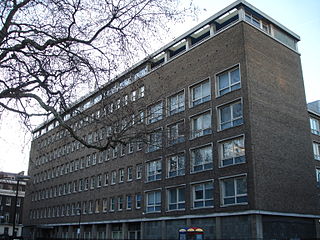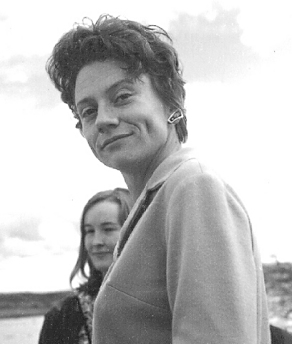Related Research Articles
The Iron Age is the final epoch of the three historical Metal Ages, after the Chalcolithic and Bronze Age. It has also been considered as the final age of the three-age division starting with prehistory and progressing to protohistory. In this usage, it is preceded by the Stone Age and Bronze Age. These concepts originated for describing Iron Age Europe and the Ancient Near East. The indigenous cultures of the New World did not develop an iron economy before 1500.

Near Eastern archaeology is a regional branch of the wider, global discipline of archaeology. It refers generally to the excavation and study of artifacts and material culture of the Near East from antiquity to the recent past.

UCL's Institute of Archaeology is an academic department of the Social & Historical Sciences Faculty of University College London (UCL) which it joined in 1986 having previously been a school of the University of London. It is currently one of the largest centres for the study of archaeology, cultural heritage and museum studies in the world, with over 100 members of staff and 600 students housed in a 1950s building on the north side of Gordon Square in the Bloomsbury area of Central London.

Samuel Abraham Goudsmit was a Dutch-American physicist famous for jointly proposing the concept of electron spin with George Eugene Uhlenbeck in 1925.
The American Society of Overseas Research (ASOR), founded in 1900 as the American School of Oriental Study and Research in Palestine, is a non-profit 501(c)(3) organization based in Alexandria, Virginia, which supports the research and teaching of the history and cultures of the Near East and Middle Eastern countries. ASOR supports scholarship, research, exploration, and archeological fieldwork and offers avenues of disseminating this research through their publications. ASOR also provides support for undergraduates and graduates in institutions of higher education around the world pursuing studies of the history and cultures of the Near and Middle East.

The Archaeological Institute of America (AIA) is North America's oldest society and largest organization devoted to the world of archaeology. AIA professionals have carried out archaeological fieldwork around the world and AIA has established research centers and schools in seven countries. As of 2019, the society had more than 6,100 members and more than 100 affiliated local societies in the United States and overseas. AIA members include professional archaeologists and members of the public.

Iranian studies, also referred to as Iranology and Iranistics, is an interdisciplinary field dealing with the research and study of the civilization, history, literature, art and culture of Iranian peoples. It is a part of the wider field of Oriental studies.

Tenta, also referred to as Kalavasos-Tenta or Tenda, is an Aceramic Neolithic settlement located in modern Kalavasos near the southern coast of Cyprus. The settlement is approximately 38 kilometres southwest of Larnaca and approximately 45 kilometres south of Nicosia. Tenta occupies a small natural hill on the west side of the Vasilikos valley, close to the Nicosia–Limassol highway.

Frank Asaro was an Emeritus Senior Scientist at the Lawrence Berkeley National Laboratory associated with the University of California at Berkeley. He is best known as the chemist who discovered the iridium anomaly in the Cretaceous–Paleogene boundary layer that led the team of Luis Alvarez, Walter Alvarez, Frank Asaro, and Helen Michel to propose the Asteroid-Impact Theory, which postulates that an asteroid hit the Earth sixty-five million years ago and caused mass extinction during the age of the dinosaurs.

The W. F. Albright Institute of Archaeological Research (AIAR) is an archaeological research institution located in East Jerusalem. It is the oldest American research center for ancient Near Eastern studies in the Middle East. Founded in 1900 as the American School of Oriental Research, it was renamed in 1970 after its most distinguished director and the father of biblical archaeology, William F. Albright. Its mission is to develop and disseminate scholarly knowledge of the literature, history, and culture of the Near East, as well as the study of civilization from pre-history to the early Islamic period.

Cynthia Irwin-Williams was an archaeologist of the prehistoric American Southwest. She received a B.A. in Anthropology from Radcliffe College in 1957; the next year she received a M.A. in the same field. In 1963 she completed her educational career in Anthropology with a PhD. from Harvard University. Beginning her career in the 1950s, Irwin-Williams was considered a groundbreaker for women in archaeology, like her friend and supporter Hannah Marie Wormington.
The Society for Underwater Historical Research (SUHR) was an amateur maritime archaeology organisation operating in South Australia (SA). It was formed in 1974 by recreational scuba divers and other persons to pursue an interest in maritime archaeology and maritime history. The SUHR was renamed as the South Australian Archaeology Society in March 2012 as part of a plan to expand its activities beyond maritime archaeology to include other archaeological disciplines.
Crystal-Margaret Bennett was a British archaeologist. A student of Kathleen Kenyon, Bennett was a pioneer of archaeological research in Jordan and founded the British Institute at Amman for Archaeology and History.
Diana Buitron-Oliver was an American classical archaeologist and curator, specializing in Greek vase painting.

Anna Marguerite McCann was an American art historian and archaeologist. She is known for being an early influencer—and the first American woman—in the field of underwater archaeology, beginning in the 1960s. McCann authored works pertaining to Roman art and Classical archaeology, and taught both art history and archaeology at various universities in the United States. McCann was an active member of the Archaeological Institute of America, and received its Gold Medal Award in 1998. She also published under the name Anna McCann Taggart.
The archaeology of Cyprus involves the analysis of human activity derived from Cypriot artefacts and architecture from the Neolithic through to the British period. The earliest archaeological discoveries in Cyprus are attributed to European amateur collectors or “treasure hunters” during the early 19th century. By the mid 19th century, systematic fieldwork and excavations were conducted on various sites involving studying the remains of Cypriot cemeteries and tombs, maritime artefacts, architecture, pottery as well as a range of other individual artefacts. Subsequent findings and analysis detail the social and physical landscapes of ancient Cyprus as well as their evolving culture, religious beliefs and technology throughout antiquity.
Penelope Anne Mountjoy is an archaeologist from the United Kingdom who specializes in Mycenaean ceramics. Mountjoy has written several books and received numerous awards and fellowships to continue her research on Greek pottery.
Michael Mathias Homan was a Professor of Theology and Department Head at Xavier University of Louisiana in New Orleans. He attended the University of Nebraska Omaha, and the University of California San Diego where he majored in Hebrew Bible and minored in Near Eastern Archaeology and Ancient Near Eastern History and Religion. Homan taught courses in Hebrew Bible, Hebrew language, ancient Near Eastern religion, and a course about the cemeteries of New Orleans.
Lindy Webster Cayzer CF is an Australian botanist.
Louise Steel is Professor of Near Eastern Archaeology at the University of Wales Trinity St David. Her research focuses on the prehistoric Mediterranean world, in particular Cyprus and the Eastern Mediterranean, as well as on themes of materiality and the human body. She conducts fieldwork in Cyprus at the Late Bronze Age site of Arediou Vouppes.
References
- ↑ Harris, Charles U. (1989). "The Role of CAARI on Cyprus". The Biblical Archaeologist. 52 (4): 157–162. doi:10.2307/3210132. ISSN 0006-0895.
- ↑ Crewe, Lindy (2018-10-01). "CAARI at Forty: Celebrating a Place for Collaboration on Cyprus". Journal of Eastern Mediterranean Archaeology and Heritage Studies. 6 (3): 217–229. doi:10.5325/jeasmedarcherstu.6.3.0217. ISSN 2166-3548.
- 1 2 3 Davis, Thomas W. (2008). "What's in a Name? CAARI at Thirty". Near Eastern Archaeology. 71 (1/2): 16–20. ISSN 1094-2076.